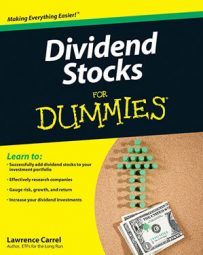To raise capital, companies can issue two types of stocks: common and preferred. Both common stocks and preferred stocks offer different rights, benefits, and restrictions.
Common stock
When people talk about stocks, they typically mean common stock, the most popular and widely-held type of equity. Holders of common stock share in the company’s profits through increasing dividends and a rising share price. Common shareholders elect the board of directors and vote on broad corporate issues such as mergers.
However, shareholders receive the last claim on earnings and the company’s assets. In other words, if the company goes bankrupt, you receive your payment after all the creditors and preferred stock holders get paid. In almost every bankruptcy, common shareholders get nothing.
Preferred stock
As its name implies, preferred stock holds advantages over common stock. However, its disadvantages actually outweigh its advantages in most cases.
Following are some of the advantages preferred stock offers shareholders:
Fixed dividends: Dividend payments remain more stable, which can be an advantage in times when the company is having trouble making a dividend payment but a disadvantage when dividends rise. Often the yields are higher than common dividends and the corporation’s bond interest rates.
Payment priority: Holders of preferred stock are first in line to receive dividends. In other words, they receive their dividends before holders of common shares receive theirs. With cumulative preferred stock, if the company has unpaid and overdue debts to the preferred shareholders, all the unpaid preferred dividends must be distributed before the common shareholders receive a penny. If the firm is in serious trouble (little cash, no assets to sell for cash, and no ability to borrow to pay the dividend), the dividend may have to accrue (accumulate).
Greater claim to any of the company’s assets: In the event of a bankruptcy and ensuing liquidation, holders of preferred shares receive any money left over before holders of common shares receive any money. In liquidations, common shares often become worthless.
Preferred shares also carry some considerable disadvantages:
Fixed dividends: Although a fixed dividend payment can be an advantage when the company fails to earn a profit, it also means the dividend payment doesn’t rise when the company earns bigger profits. Fixed payments also make the shares interest-rate sensitive. If interest rates rise, the share price may fall in order to boost the yield.
Less share price appreciation: Because the dividend is fixed, the price of preferred shares is based on the yield they offer. As a result, preferred shares actually trade more like a bond than a stock.
No voting rights: Holders of preferred shares have less say than common stock holders in how the company is managed and who sits on the board of directors.
In short, holders of common stock assume more risk but stand to gain more when the company is profitable.
You can usually tell the difference between a company’s common and preferred stock by glancing at the ticker symbol. The ticker symbol for preferred stock usually has a P at the end of it, but unlike common stock, ticker symbols can vary among systems; for example, Yahoo! Finance lists preferred stock with the company’s ticker symbol followed by a hyphen, the letter P, and then the series letter (for example, J.P. Morgan preferred is JPM-PE), whereas Google Finance includes only the series letter (without the P, JPM-E).

